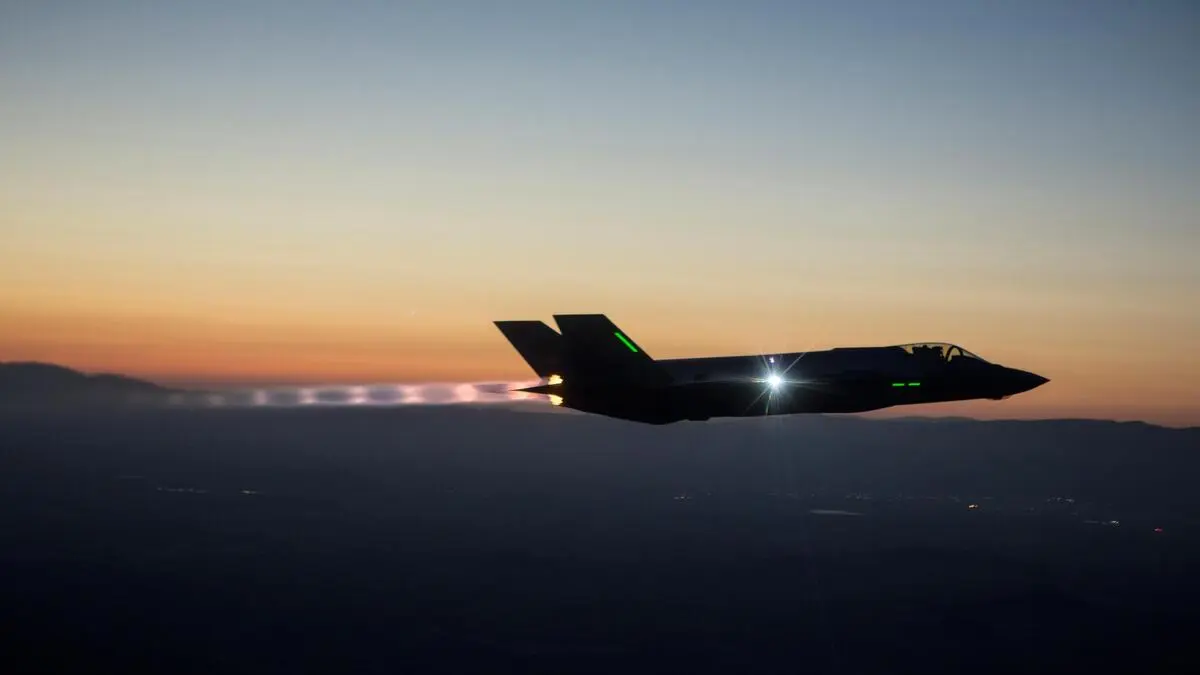“(Madrid – August 10, 2025) – Spain has formally removed the US-designed F-35 Lightning II from the table and will focus on European options – the Eurofighter Typhoon in production and the future Future Combat Air System (FCAS) – according to the Ministry of Defense and multiple industry sources. A Defense Ministry spokesman confirmed that Spain is “no longer considering” the F-35 and will rely on the Eurofighter in the near future, with the FCAS forming the basis of its future combat aviation.
Commitment to European industry and capacity development
In a statement to Jensen, the ministry summarized the new approach: “The Spanish option includes the current Eurofighter and the future FCAS.” The policy is consistent with Madrid’s long-standing goal of directing major defense spending towards European manufacturers. The final assembly of the new Typhoon will take place at Airbus Getafe, which will protect local jobs and It will strengthen Spain’s position in the continent’s aerospace supply chain.
Lockheed Martin responded that the announcement noted that foreign military sales were “government-to-government transactions” and that questions had been asked of the relevant governments.
- Royal Air Force No. 617 Squadron Lockheed Martin F-35B and Spanish Navy 9 Escuadrilla McDonnell Douglas EAV-8B Harrier II conducted a formation fly-by. (Airwolfhound/Wikimedia)
F-35 Switzerland On a parallel discussion
Spain’s decision comes as Switzerland is also debating its own F-35 acquisition. Bern opted for the F-35A in 2021 because it was older. F/A-18C/D Hornets, but parliamentary action and public petitions have kept the possibility of reversing that choice alive. Swiss critics point to concerns about life-cycle costs, mission data sovereignty and a desire to invest in European alternatives such as the Rafale or Eurofighter. Supporters counter that the F-35 offers unparalleled interoperability and advanced stealth capabilities within NATO. While Switzerland has not canceled its order, political unease reflects some of the considerations behind Spain’s rejection.
Implications for the Spanish Air Force and Navy
For the air force, the decision marks a transition from the Helcon program that solidifies the path Anchored—20 Trench-4 Typhoons for delivery under Helcon I between 2026 and 2030, followed by 25 more under Helcon II between 2030 and 2035. These aircraft will bridge the gap until the FCAS enters service around 2040.
The bigger challenge lies with the Navy. The retirement of the EAV-8B Harrier around 2030 will leave the Fleet II aircraft carrier Juan Carlos I without a fixed-wing combat aircraft, as there is no European STOVL design to replace the Harrier. Without the F-35B, extending the Harrier’s service life, changing the ship’s operational profile, or developing a future catapult-capable design—none of these will be able to fully fill this gap in the near future. The Spanish Air Force Eurofighter Typhoon will be on display at the Gijon International Air Show 2024. (David Álvarez López/Wikimedia)
The rationale behind Madrid’s decision
Spain’s stance is based on three main factors:
- Industrial and strategic autonomy: The management of funds in the Eurofighter and FCAS sustains national industry and strengthens Europe’s ability to present independent defense solutions.
- Capability pool: The Typhoon upgrade provides a proven platform until the FCAS becomes operational, some – but Not all – transition risks are mitigated.
- Entry politics: This move signals a preference for European strategic autonomy while maintaining Spain’s NATO commitments.
Opportunities and risks ahead
Benefits include maintaining aerospace jobs, ensuring fleet parity with the existing Typhoon, and deepening Spain’s stake in the FCAS program. However, risks remain, notably the impending reduction in the Navy’s fixed-wing capability, reduced interoperability with NATO partners operating the F-35, and potential delays in FCAS development due to its complex multinational governance.
Local and regional outlook
The decision has prompted the Spanish parliament to ask Defense Minister Margarita Robles for more details on bridging strategies, industrial offsets, and operational implications. Regionally, Spain’s stance could influence European procurement discussions, especially if Switzerland’s F-35 discussions could lead to a similar outcome.
Strategic Watch Points
The observers will monitor the pace and implementation of the Halcon program, the governance and task-sharing arrangements within the FCAS, and any steps the Spanish Navy takes to address its growing fixed-wing aviation gap. Developments in Switzerland’s political debate on the F-35 could also have wider implications for Europe’s defense industrial landscape.
Also Read: Swiss Politicians Urge Scrapping F-35 Deal After U.S. Slaps Tariffs on Swiss Exports
FAQs: People Also Ask
Spain rejected the F-35 primarily to support European-made fighters such as the Eurofighter Typhoon and the future Future Combat Air System (FCAS). The decision helps Spain protect local aerospace jobs, reduce dependence on the U.S., and strengthen Europe’s defense industry. It also reflects Spain’s push for strategic autonomy in defense, which is now a trending topic across Europe.
The Spanish Navy faces a major challenge. Once the Harrier jets are retired around 2030, Spain will have no ready replacement, as it does not have a European-made STOVL (short take-off/vertical landing) aircraft like the F-35B. This could leave Spain’s aircraft carrier Juan Carlos I without a modern jet, forcing the navy to extend the use of the Harrier, redesign operations, or wait for a future European naval fighter solution. The issue is gaining attention in global security discussions as the “European defense gap” trend.
Spain’s decision reduces interoperability with NATO members already operating the F-35, but it boosts Europe’s long-term independence through programs like the FCAS. Many analysts link this to the growing discussion on Google about “European strategic autonomy,” especially in the wake of rising geopolitical tensions. Spain is now betting on European cooperation, even if it means short-term risks to its navy and air force.








Leave a Reply